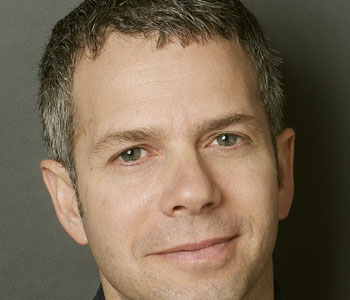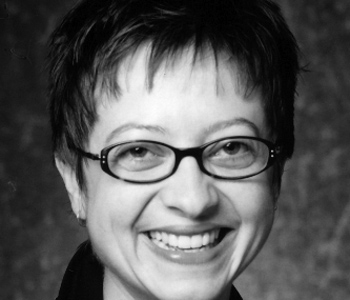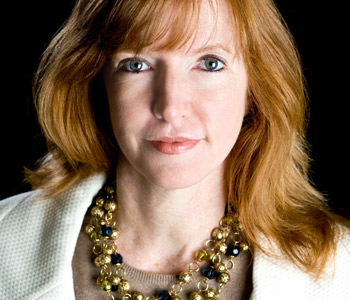Imani Perry
More Beautiful and More Terrible: The Embrace and Transcendence of Racial Inequality in the United States
New York University Press
272 pages, 6 x 9 inches
ISBN 978 0814767375
This book is about a conflict between American ideals and our social reality. Although we embrace the ideal of racial equality, in myriad studies in numerous fields there is abundant evidence that Americans act in ways that disadvantage people of color, and most dramatically African Americans, on the basis of race.
I attempt to provide an explanation for how and why we have this gap between word and deed. What I find, by culling through a huge body of research and analyzing cultural, legal and social realities, is that the “practice of racial inequality,” as I call it, is a cultural practice that is learned broadly through popular narratives, categories, rubrics, and in how we create value.
It is important to note that by and large, racial inequality is not a matter of intentional bias or deliberate animus. In fact, I argue that we are in a “post-intent” age when it comes to racial inequality—meaning that the “intention” to discriminate is not a good measure of the existence of discrimination. Much of the discrimination is unintentional and/or unconscious.
So we must seek solutions that shift racial narratives and develop cultural practices that lead to greater access and full civic and social participation, for communities of people impacted by the practice of racial inequality.
This book also challenges some basic tenets in the study of race. The distinction that is often drawn between individual and structural/institutional racism is a false dichotomy. Structures and institutions are sustained by individuals. Structural racism is nothing more than the cumulative impact of individuals acting to disadvantage others on the basis of race in ways learned through our history and culture. Some of these ways are what is termed in legal studies “facially neutral,” that is to say, race isn’t apparent on the surface, and yet racial inequality is at work.
I also question the ongoing usefulness of the idea of “the other” which has great currency in academic writing about race. We talk about non-white people as being treated as “the other,” but race doesn’t seem to operate in simple binaries any longer, but rather as a spectrum in which members of any group may be within the range of what is deemed as acceptable, or cast out as “extreme.” This evaluation tends to have its own embedded bigotries, but it is not the same as the Enlightenment era good/evil, white/black that we’ve grown accustomed to using as an explanation. Again, new times call for new tools.
The book is about race, but more broadly it is about the idea of Democracy. In it, I’m grappling with how we move closer to a society in which the playing field is level, and even more importantly, in which meaningful participation in its fruits and labors is not determined by an accident of birth like race.
This is a book that called me, rather than one I looked for. I am continually fascinated by the process of “retrenchment” or back-sliding, as it were, after gains are made in a nation’s progress towards equality, and how “the imaginative work of white supremacy” as a matter of culture, can lead to new forms of inequality to replace the old. This is part of what we’ve witnessed in the post-Civil Rights era.
Part of our challenge today is that we use old-fashioned terms to describe new challenges, and those terms seem to hamper meaningful discussion of race, and we get tangled in a web of anxiety, rhetoric and slogan that disables forward movement on matters of equality and inclusion.
This is one of a substantial group of books on race in the 21st century United States. What distinguishes it is that it is deeply interdisciplinary. I use work from sociology, cultural theory, cognition research, neuroscience, political science, social theory, psychology, and more. I identify the structural analogies apparent in work on race across the fields in a way that enables the reader to see the patterns and common themes that a widely divergent group of thinkers are finding when it comes to how race works today.
I did not come to the book with predetermined conclusions, but instead let the research and analysis guide its outcomes. And the risk, for an academic book, is that it offers solutions based upon both addressing the practice of inequality, and maximizing the ability of those discriminated against to withstand inequality.
Some of these solutions are legal and policy based, others are community based. All are based in a belief in our fundamental responsibility to work for the “common good” and a faith in human agency notwithstanding the power of social institutions and bureaucracies.
If a person were randomly opening the book I think I’d want them to flip to page 177, the beginning of Chapter Six, “Exceptionally Yours: Racial Escape Hatches in the Contemporary United States.”
People are inclined to use the example of “exceptions to the rule” as evidence that racial inequality doesn’t exist. President Obama is a prime example of this. But what I show is that exceptionalism is in fact a part of the mechanism of racial inequality. “Exceptionals” can be individuals or groups (i.e. role models or model minorities). In the way our culture uses the symbolism of the exceptionals, the access of few actually serves to legitimize the exclusion of many, And of course, the few who have “made it” often have gained that access as a function of some form of advantage: class, color, preferences for particular ethnicities within groups of people of color, elite education. Moreover, those who are exceptionalized don’t necessarily stand as willing or good representatives of the interests of the larger group.
In light of this I describe a practice of “critical exceptionalism” of which I consider myself to be a participant in, whereby individuals who have the benefit of being seen as positive “exceptions” to the rule of their group, use the platform of access and acceptability to illuminate the barriers that exist for many member of the group to which they belong.
It is my greatest hope that this book is a conversation starter. I want it to be in the hands of people who are open to re-thinking their individual habits about how they distribute the knowledge, access and benefits they have control over.
Hopefully it will also have a community life in which groups of people in schools and organizations will use it as a means of approaching the work they do with fresh-eyes and a passion for greater fairness.
I don’t believe that most readers will agree with every single conclusion I draw, but the body of evidence is rich and diverse enough that even if they find some disagreement with the book as a whole, it will give every reader something useful to work with in thinking through racial issues and other kinds of inequality.
I believe in muckracking journalist Ida B. Wells quotation, “The people must know before they can act.” I also believe in civil rights leader Ella Baker’s quote “strong people don’t need strong leaders.” Meaningful knowledge is key to participatory democracy and a strong people, and I hope to make a real contribution in this regard.
I also would be excited if the book inspires more conversation between scholars and policy makers across different fields and arenas. There are so many working in silos on similar issues with the same concerns and commitments, who never come across each other work much less converse.
I’m excited by translational or use-value research in both health care and education, because the research seeks to make intervention to improve life, and the intervention can change over the course of the project in order to better meet the goal. It would be wonderful if we more often approached policy with that kind of imagination, improvisation and pragmatism. I hope this book encourages a move in that direction.

.jpg)


We don't put paywalls. We don't distract you with ads. We don't sell your data.
Please help to keep this running!